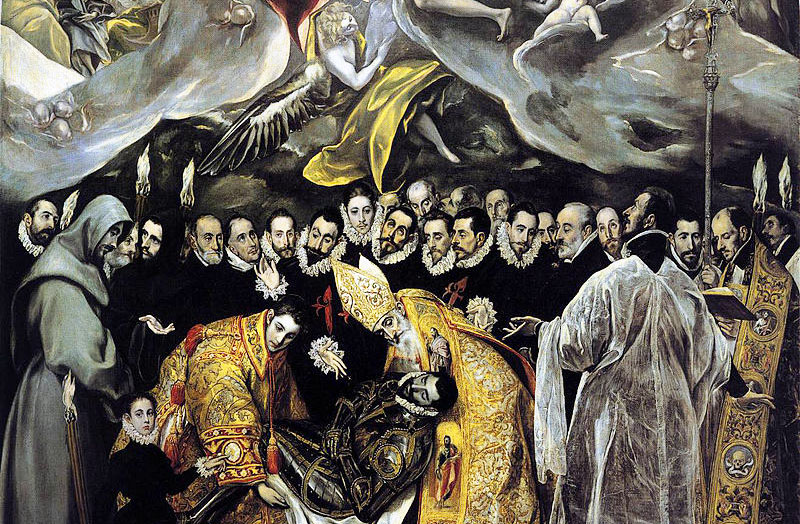If you plan to visit the beautiful city of Toledo on an upcoming Spanish holiday, you should definitely take some time out of your busy touring schedule to visit the Iglesia de Santo Tome. This historical Catholic church, aside from being absolutely stunning from an architectural standpoint, is also home to The Burial of Count Orgaz, one of the most famous paintings of El Greco, an artist who called Toledo home for most of his late life and career. To help you become more familiar with this renowned painting, below we have provided a brief overview, including some information regarding its theme and history.
The Burial of Count Orgaz: Overview
The Burial of Count Orgaz is widely considered one of El Greco’s finest masterpieces, illustrating a significant and quite popular local Toledo legend. The painting is exceedingly large, particularly in comparison to some of his other works, and is clearly divided into two sections—a heavenly above and a terrestrial below—although it gives very little inkling of duality, as both components of the work are brought together harmoniously.
Theme
The theme of The Burial of Count Orgaz is inspired by a legend that has its origins in the early 14th century. In 1312, a man named Don Gonzalo Ruiz, a native of Toledo and Senor of the town of Orgaz, died. Following his death, and due primarily to the work he had performed in the community, his family received the title of Count, by which he is now generally and posthumously known. Ruiz was very religiously and spiritually devout, and along with other charitable acts, he donated sums of money for the enlargement and decoration of the Church of Santo Tome, which also happens to be the parish church of El Greco. The Count was also known as a philanthropist and forward-thinking Knight, always ready to help those less fortunate than he. According to the legend, at the time he was buried, Saint Stephen and Saint Augustine descended in person from the heavens and buried him by their own hands in front of the dazzled eyes of those in attendance.
History
For the painting, El Greco was commissioned by Father Andres Nunez, the parish priest of Santo Tome, who wanted the painting for the side chapel of the Virgin of the Church of Santo Tome. El Greco completed the painting between 1586 and 1588, and Nunez, who had initiated the painting to refurbish the Count’s burial chapel, is portrayed in the painting reading.
Soon after The Burial of Count Orgaz was completed, the people of Toledo (and those from nearby towns and villages) flocked to Orgaz to see the painting. At the time of its completion, much of the painting’s popularity can be attributed to the lifelike portrayal of the notable men of Toledo of the time. These men, who by custom and tradition turned out to help with the burials of Toledo’s most important citizens, including that of Count Orgaz, were all included in the painting as per the instructions of Father Nunez.
Many of Toledo’s most important men were graciously paid homage by El Greco’s excellent portrayal of them in the painting, including members of the clergy, jurists, poets and scholars. As a result, The Burial of Orgaz has for centuries now been admired not only for its art, but also because it served as a gallery of portraits of the most eminent social figures of the time in Toledo, thus securing El Greco’s position as one of the few great Renaissance portrait painters in history.



